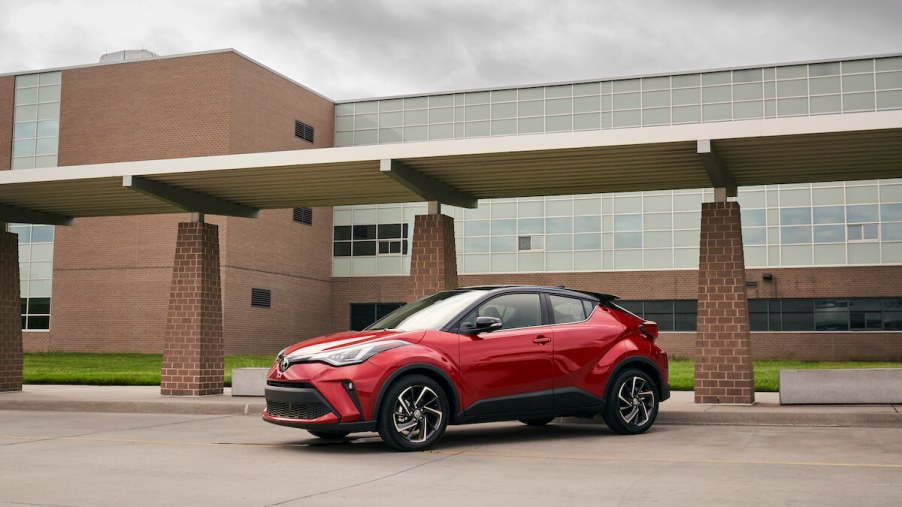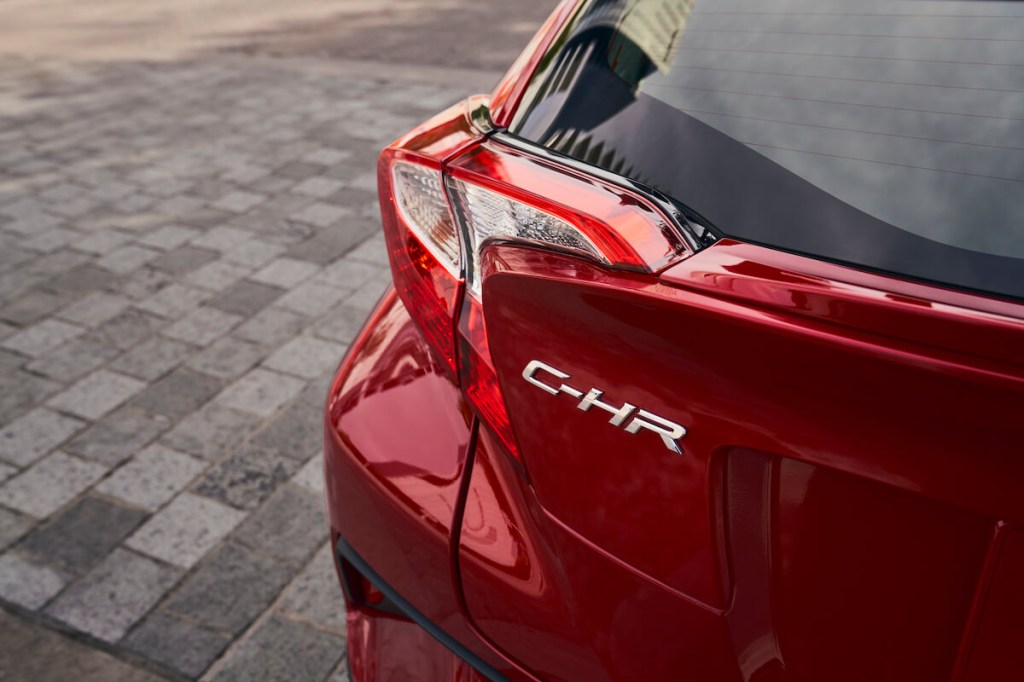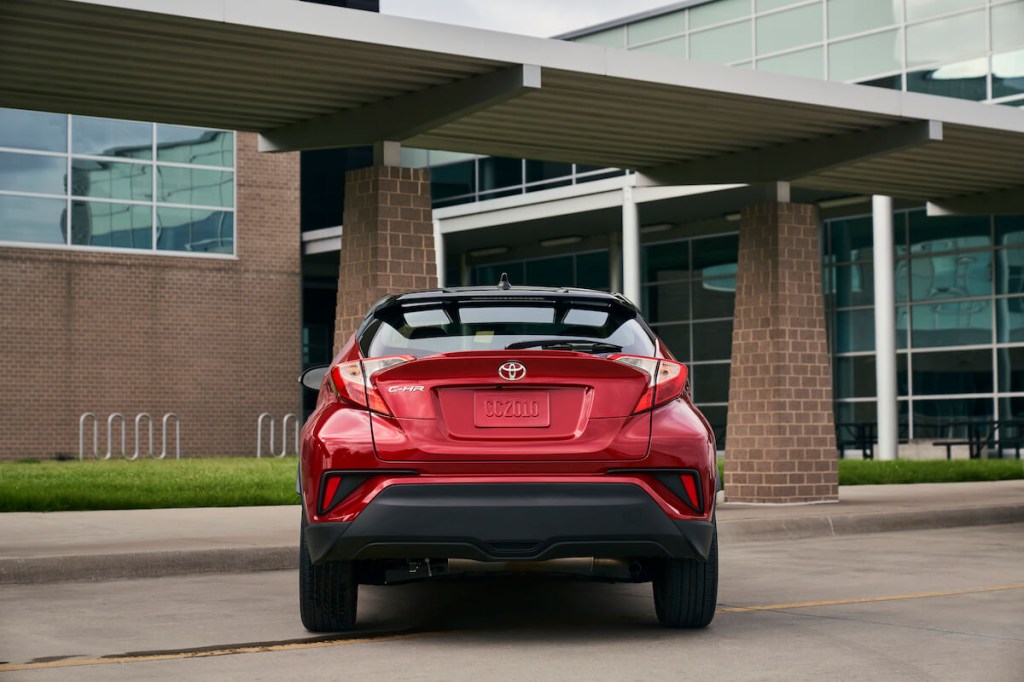
Is the Toyota C-HR Worth Buying?
When looking at the 2020 Toyota C-HR, the words of the late, great Hunter S. Thompson come to mind: “Too weird to live, and too rare to die.”
Yes, the Toyota C-HR is a weird-looking car, even among its subcompact crossover competition like the sleek Mazda CX-3 and the slightly-more-subtle Honda HR-V. But Toyota went out on a limb when it designed it. According to the company, the C-HR is a “blend of a sporty coupe, hatchback, and crossover.” We get that it makes a statement out on the road, but is it worth buying?
The Toyota C-HR was supposed to be a Scion

Remember the Scion brand? It was a sub-brand of Toyota that had a line of mono-trimmed, plastic-filled funky-looking cars that was axed back in 2016. Before then, Toyota planned to release the C-HR under the Scion brand name, which makes sense because the car looks so different than its current stablemates. Weirdness aside, the C-HR does its part as a mutant crossover, providing a slightly elevated ride height and decent fuel economy numbers (28 city/31 highway), making it great for city driving. However, that’s where the utility ends.
What is the Toyota C-HR good at?

Upon scanning the list of the subcompact crossover SUVs, you’ll notice that most of them are offered with all-wheel drive. The Toyota C-HR, on the other hand, does not. It comes standard with a front-wheel-drive setup consisting of a 2.0-liter, four-cylinder engine that makes 144 horsepower and 139 lb-ft of torque and is mated to a CVT transmission. This combination is good for a 0-60 time of 11 seconds, which is very slow by today’s standards.
So it’s not an outdoor adventurer or a track racer, but it does do a great job of being “different.” The C-HR was refreshed for 2020 with a new front grille, bumper, and headlights, and Toyota even included Android Auto as standard.
But the interior styling is an interesting blend of sleek and funky; it has a healthy dose of piano-black trim throughout, an available 8-inch touchscreen front and center, and a unique headliner that provides ample headroom. Cloth seats are standard, but leather is now available in the top Limited trim level. So it’s not exactly a luxury car either, but after all, the C-HR was always aimed at a younger crowd.

Would we recommend it?
While we love a good crossover that can fit into just about anyone’s lifestyle (as they were technically meant to do), the Toyota CH-R interjects a formula into the segment that just doesn’t add up. Its aggressive look doesn’t match its slow performance, and its interior isn’t as functional or as equipped as competitors like the Honda HR-V and Kia Seltos. Not to mention the lack of all-wheel drive.
If we had to, we would recommend buying the top-level Limited trim in order to get the most for your money, as it at least comes with leather seating surfaces, heated seats, and Toyota’s safety suite of driver aids. But if we were looking to spend the $26,200 that fully-equipped C-HR costs, then we would probably look at one of the other cars in the category.



